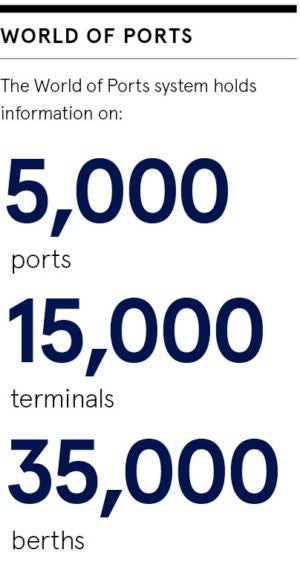Shipping is the lifeline of international trade and remains vital to the global economy. Despite the rapid technological evolutions transforming the business landscape in the last two decades, the relationship between shipping agencies, vessel owners, operators and charterers has changed very little in this time.
Firstly, that relationship is as important as it’s ever been. Agents are crucial to looking after and protecting the interests of the principal and arranging services when vessels are in ports around the globe. Secondly, agents procure and source services on the principal’s behalf, which can result in strained relations when transparency is lacking and information is not shared well.
The growing cost pressures on the shipping industry since the financial crisis have placed further strain on relationships. Agency fees have reduced, increasing the dependence on alternative revenue streams such as volume commissions or rebates from vendors. This has only served to make principals less trusting of agents, resulting in a desire to reduce their fee even further during the next negotiations.
“Vessel operators struggle to get a good overview of what’s going on in the local port at any given time and rely on the agent to be their eyes and ears in the port. As such, critical business decisions are taken based on information provided by an agent,” says Frank Olsen, chief executive of Inchcape Shipping Services.
“From a transactional point of view there is a historic lack of trust and it’s exacerbated by the very nature of the business. The principal is a long way away from the port and relying entirely on the agent’s ability, willingness and enthusiasm to communicate timely and accurately as the port call progresses.
You can see what’s going on with your vessels in as much detail as you want, when you want and how you want
“The main thing you need when your vessel is in port, and this has never changed, is information. You need to know what’s happening at the various stages of the port call so you can make decisions to limit your costs, change your plans, save time or do other things to enhance your own and your customer’s business. If you don’t have transparency over the physical operation and financial process, you can’t trust that process or improve your decision-making.”
Historically, the choice of an agent has been based on local reputation and relationships, rather than any global criteria. Over the last 20 years, however, governance and compliance have become more important to large shipping companies, with an agent’s compliance with regulations often swaying selections. Agents with global scale may also be able to offer a better value proposition.
Though these layers of compliance and scale are becoming increasingly significant, it is technology that is set to drive the most differentiation among shipping agents as it provides principals with unprecedented transparency across their shipping activities. Inchcape is currently rolling out its industry-leading operating system Optic that captures all financial, time and events data from each port and allows owners to access the information in real time on their smartphone or tablet, in their enterprise resource planning system or via a web-based dashboard.
“You can see what’s going on with your vessels in as much detail as you want, when you want and how you want, port call by port call, vessel by vessel or at a higher level of aggregation if you’re only interested in certain elements across a wider fleet or in certain locations,” says Mr Olsen. “It’s a broadly real-time granularity of what’s going on with your assets and your cargo at any particular moment in any particular geography.”
By capturing data from more than 70,000 port calls worldwide each year, Inchcape is able to benchmark operations, costs and performance metrics to enable principals to optimise their fleet utilisation and reduce port related costs.

Inchcape also keeps an up-to-date database of all commercial port and berths through a system called World of Ports, providing companies with a comprehensive global port, terminal and berth marine assurance tool to aid the vessel-to-berth compatibility process. All ports and berths are geofenced and linked to AIS (automatic identification system) data. This provides visibility over vessel movements, port congestion and berth availability.
Combining the operational data from Optic with the World of Ports information enables ship operators to get a unique overview of ports, vessels and cargo status. This allows for better voyage planning and call optimisation.
“That will have huge implications on how fast your vessels steam to the next port or how much time is spent idling outside the port,” says Mr Olsen. These are critical decisions both in terms of reducing emissions and improving voyage profitability.
Technology will no doubt underpin transparency in the future of shipping. Access to live information puts control and oversight in the hands of vessel operators, creating trust and closer collaboration with the port agent. Reducing costs will continue to be important in the shipping industry, so the ability to drive operational efficiencies through unprecedented access to information will be a major differentiator.
“We are deploying technology to provide the transparency which will create trust and partnership between the principal and agent,” says Mr Olsen. “Phone calls and emails are no longer sufficient. You need to see it yourself, know what’s going on and be able to interact on your terms based on the criteria that you set to make changes when they are needed.”
For more information please visit iss-shipping.com




